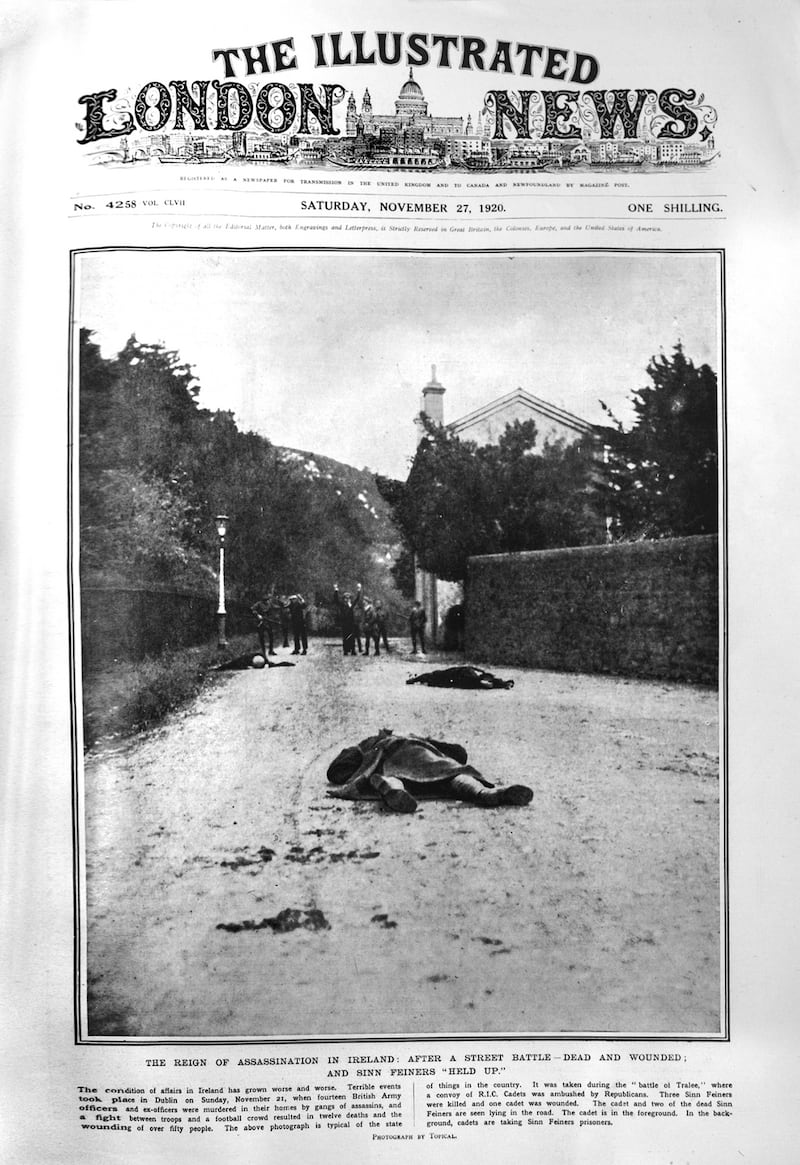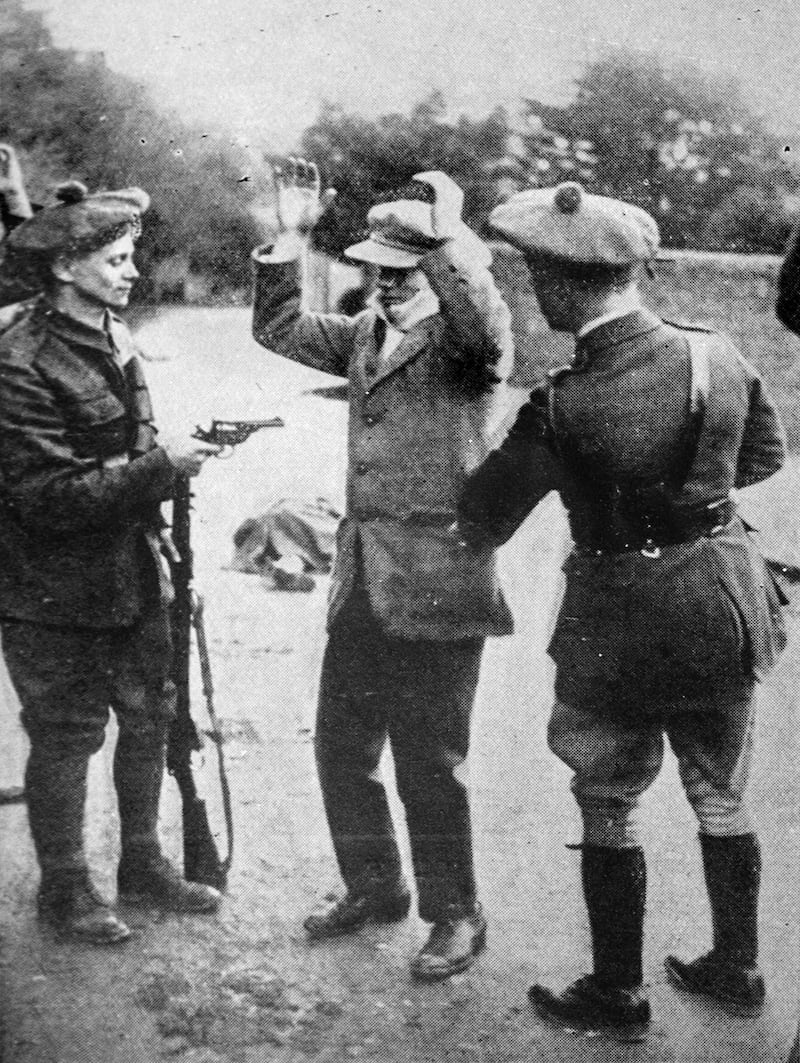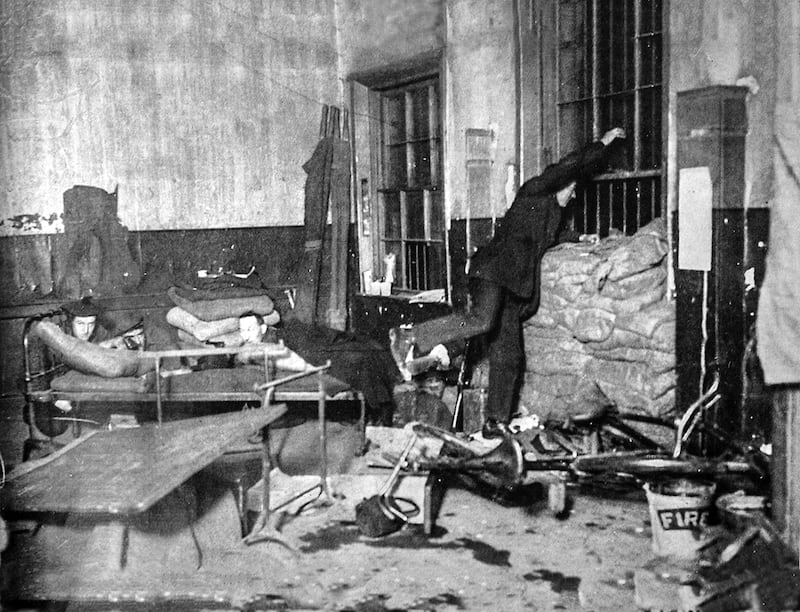Fake news has come to the fore recently, particularly across the Atlantic. It is interesting that about 100 years ago in Ireland, practitioners of propaganda and spin were honing their skills and bringing that practice into the 20th century.
As the War of Independence intensified in early 1920, the view in Whitehall was that the Irish Administration was dysfunctional. A clean sweep was required and new officials were assigned to Dublin Castle. Among these was Basil Brooke, a war correspondent for the Daily Mail. Appointed director of public information, he proceeded to develop an organisation that emitted propaganda as "news". Much consideration was given as to how best this would be done.
Also located in the castle was the information section of the police. This was led by Captain Hugh Pollard, who had worked on propaganda at the intelligence section of the British war office during the first World War. As the war continued, Pollard and a colleague, Captain William Darling, published the official Weekly Summary. However it soon gained a poor reputation among the press due to its crude falsehoods.
Pollard and his colleagues’ proactive attempts at deception were publicly unmasked towards the end of 1920. It started when on November 12th, 1920, an auxiliary engagement at a creamery near Ballymacelligott, Tralee, left two men dead. Coincidentally, a press party (accompanied by Captain Pollard) was in the area and that afternoon saw the aftermath of what was a relatively minor engagement.


However, reports soon appeared in the British press of what appeared to be a large battle in Tralee, a significant success for the crown forces. Photographs showed three dead lying in the foreground while auxiliary cadets took “Sinn Féiners” prisoner. However, the reality soon became evident, as the real location was immediately identifiable. It turned out that this was a full-blown attempt at fake news.
Bizarrely, a quiet seaside suburb of Dublin was being portrayed as the scene of the "battle" in Tralee. Trying to show that they were winning, the Dublin Castle press officers had staged the event, using auxiliaries, some dressed as civilians, at Vico Road in Killiney. Pathé also filmed the fictional encounter.
The most violent day of the War of Independence occurred in Dublin a few weeks later. On the morning of the aptly named Bloody Sunday, November 21st, the IRA set out to assassinate suspected British spies. Later that day, the crown forces fired on a football match at Croke Park. That night, also, three men in custody in Dublin Castle were shot.
Two of the men killed at Dublin Castle, Dick McKee and Peadar Clancy, (leaders of the Dublin Brigade) had attended a meeting of GHQ staff with Michael Collins the previous night. In the early hours of the following day, Clancy and McKee were arrested at a house on Gloucester Street, betrayed by a tout.
The pair were brought to a guardroom in in Dublin Castle. Also there was Conor Clune, an Irish-language enthusiast (but not a volunteer). Brigadier-General Ormonde Winter, head of the secret service in the castle, led the interrogation. Later the authorities announced that the three had been shot in 'an exchange of fire' while "trying to escape".
It was widely believed that they had been tortured and summarily shot. There was extensive bruising on the bodies, with multiple bullet wounds.

The castle press office had to shift up a gear. They hit on the idea of staging a reconstruction of events purporting to show how the men had tried to escape. The Graphic, a British perodical, published two photographs of a re-enactment. The first image showed the three prisoners sitting quietly in a corner while the captors (a mixed bunch of auxiliaries and military) lounged around. The second image showed armed auxiliaries lurking behind a bed. A purported prisoner grasps at the barred window. The caption on the image said the prisoners got hold of grenades, threw these, but they did not detonate. Next they grabbed rifles and fired at their guards, who killed them in an exchange of fire.
Republican view
The news-sheet Irish Bulletin was produced by the Dáil propaganda department from November 1919. It was published several times a week and circulated internationally, presenting the Republican view of events. For journalists in Britain and on the Continent, it provided a source of information that was usually accurate. It was an alternative to the Dublin Castle-fed British news agencies, and the discredited Weekly Summary. The few staff of the Bulletin had to move frequently, from hide-out to hide-out. On 26 March 26th, 1921, the office of the Bulletin was raided by Auxiliaries, who seized the typewriter and duplicator as well as the circulation list.
Immediately after the raid, Pollard and Darling decided to produce fake issues of the Irish Bulletin, using the captured equipment. Given that the original layout was of simple typewritten sheets, it wasn’t difficult to counterfeit. However the fake issues contained blatant nonsense. The deception was soon discovered. An MP in the Commons requested the chief secretary “not to waste their money in sending me any more of their forgeries”. The real bulletin soon resumed publication: genuine copies were stamped “official copy” in green ink.
In 1921 the news was even darker for the British as the number of crown forces killed every month continued to increase. The IRA mounted ambushes that became increasingly sophisticated. By mid-1921, oscillating between a policy of flooding Ireland with troops and instituting peace talks, the British opted for talks. The truce was duly signed. In the months that followed, negotiations led to the Treaty of December 1921
Media careers
The Dublin Castle press men went on to have chequered careers. Basil Clarke's by and large was successful. In 1923 he received a knighthood for his services in Ireland. The following year he founded what was considered the first public relations company in Britain. His agency grew and soon garnered prestigious clients such as Lyons and Heinz. Incredibly, in what was a case of poacher turned gamekeeper, he later developed the first code of conduct for the public relations industry.
Hugh Pollard produced a book in 1922 titled The Secret Societies of Ireland: Their Rise and Progress. Here he wrote about “a group of moral decadents leading a superstitious minority into an epidemic of murder and violent crime”. He concluded: “for the Irish problem is a problem of the Irish race . . . but is rooted in the racial characteristics of the people themselves.”
In later decades Pollard associated with the British right-wing. In 1936 some of these (and it has been suggested with the support of British intelligence) colluded to collect General Franco from the Canary Islands, where he had been stationed to keep him away from army intrigue. On July 11th, 1936, a chartered de Havilland Rapide aircraft (with Hugh Pollard, his daughter and her friend aboard, as cover) took off from Croydon, bound for the Canary Islands. Franco was duly transported to the Spanish protectorate in North Africa. From there he directed the military uprising and the Spanish Civil War began. Pollard's Spanish connection continued when in 1940 he was appointed by MI6 to duty in Madrid.
Did the efforts of the British press officers make a difference in Ireland 1920-21? Their clumsy and egregious efforts at black propaganda soon became known, and were abhorred by a liberal minority in Britain. However, the British “spin” was generally accepted by the British press, and disseminated worldwide by press agencies.
Nevertheless, as the war progressed, the reprisals in towns across Ireland marked a new low in the crown forces' campaign. Despite the efforts of the press offices in Dublin and London, the British began to earn an international reputation around the world for brutality for these and other atrocities, in what was, after all, a part of the United Kingdom. It was this international opprobrium, along with mounting military casualties that propelled Lloyd George to sign a truce with the "Sinn Féiners".
Michael B. Barry has written two critically acclaimed books: The Green Divide (on the Civil War) and Courage Boys, We are Winning (on the 1916 Rising). His The Fight for Irish Freedom, an Illustrated History of the War of Independence, recently published, completes his trilogy on the Irish Revolution 1916-1923




















